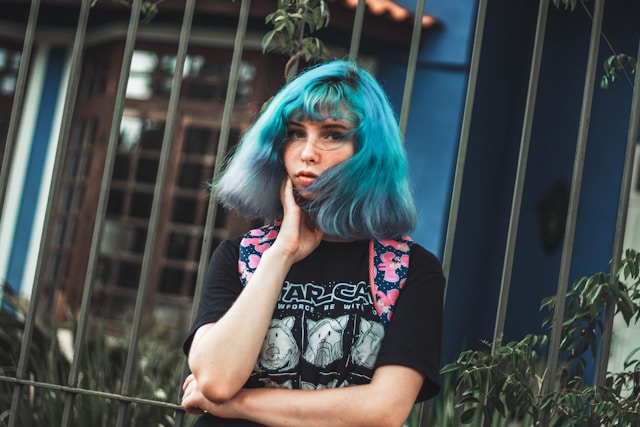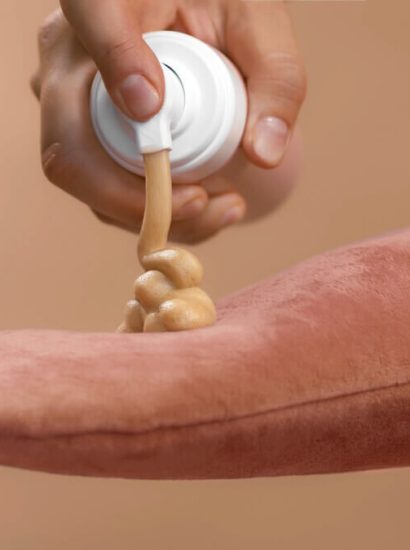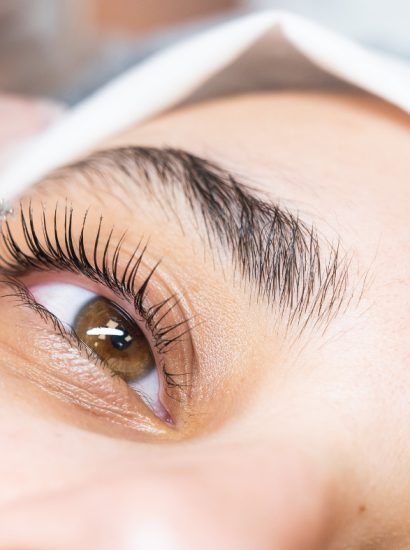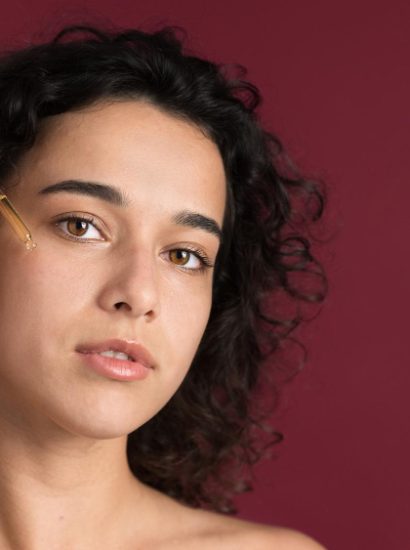Blue hair dye has become one of the boldest and most exciting ways to express individuality and creativity. Whether you’re going for a soft pastel blue or a deep oceanic hue, achieving the perfect blue hair can be tricky. However, with the right knowledge and preparation, you can make your hair color dreams come true. In this article, we’ll share 10 essential tips that will help you achieve and maintain the perfect shade of blue for your hair.
1. Choose the Right Shade of Blue
The first step in achieving the perfect blue hair is selecting the right shade. Blue comes in a variety of hues, from soft pastel blues to vibrant electric blues and deep navy shades. Before you choose, consider your skin tone. Cool skin tones often look great with icy or pastel blues, while warm skin tones tend to pair better with teal or navy hues. If you’re unsure, it’s always a good idea to test a small section of hair first to see how the color reacts with your natural tone.
2. Lighten Your Hair for Best Results
Blue hair dye works best on light blonde or pre-lightened hair. If you have dark hair, achieving a vibrant blue color will be challenging without lightening your hair first. Bleaching your hair is usually necessary to achieve the desired shade, especially if you want a bold or pastel blue. However, be sure to use a high-quality bleach and take proper care of your hair during the process to prevent damage. If you prefer to avoid the harshness of bleaching, opt for a darker blue shade that doesn’t require lightening.
3. Prep Your Hair Before Dyeing
Preparation is key to getting a flawless blue hair color. Start by ensuring your hair is in good condition before applying the dye. Use a deep-conditioning treatment a week or two before dyeing to nourish your hair and repair any damage. This will help your hair absorb the color better and give it a smooth, shiny finish. It’s also essential to avoid washing your hair just before dyeing. Natural oils help protect your scalp from irritation and help the dye adhere better.
4. Use the Right Dye for Your Hair Type
Not all hair dyes are created equal, and choosing the right one for your hair type is crucial for a long-lasting and vibrant result. Semi-permanent dyes are often recommended for bright or pastel colors because they tend to fade less quickly than permanent options. However, if you want your color to last longer, opt for a permanent dye. Some dyes come with added conditioners or nourishing ingredients, which are ideal for keeping your hair healthy during the coloring process.
5. Perform a Patch Test
Before applying any dye to your hair, it’s essential to do a patch test. This helps you avoid allergic reactions and ensures the dye works well with your hair. Apply a small amount of dye to a hidden patch of your skin (like behind your ear or on your inner arm) and leave it on for 48 hours. If you experience any irritation, redness, or discomfort, you may want to choose a different dye or consult with a dermatologist.
6. Section Your Hair for Even Application
One of the most important steps when dyeing your hair is to ensure even application. Section your hair into manageable parts to make sure the dye is applied uniformly. Use clips to separate your hair into four to six sections, depending on how thick or long your hair is. This way, you can apply the dye systematically, starting from the roots and working your way down to the ends. Make sure to saturate each section of hair fully, ensuring that no spots are missed.
7. Follow the Instructions Carefully
Every hair dye brand has its own set of instructions, and it’s crucial to follow them precisely for the best results. Typically, you’ll need to leave the dye on for a specific amount of time, ranging from 20 minutes to an hour, depending on the product. Don’t be tempted to leave the dye on longer, as this can cause your hair to become overly saturated and may result in an uneven or too-dark color. Rinse thoroughly after the recommended time, and don’t forget to use a color-safe shampoo to maintain the vibrancy.
8. Maintain Your Color with a Color-Protecting Shampoo
Once your hair is dyed, you’ll want to make sure the color lasts as long as possible. Use a sulfate-free, color-safe shampoo to avoid stripping the color. Sulfates can fade your hair dye quickly, so opting for a gentler shampoo will help preserve the blue hue. Additionally, try washing your hair less frequently, as water and shampoo can cause the color to fade faster. When you do wash, use lukewarm or cool water, as hot water can also accelerate fading.
9. Use Color-Depositing Products to Refresh Your Hue
Blue Hair Dye Over time, your blue hair color may start to fade, especially if you’re working with a semi-permanent dye. To keep your color looking fresh and vibrant, use color-depositing products such as conditioners or shampoos specifically designed to add blue pigment back into your hair. These products allow you to maintain your color without having to completely re-dye your hair. If your blue hair starts to shift to an unwanted green or purple tone, color-depositing conditioners can help restore the blue without overhauling the entire process.
10. Protect Your Hair from Environmental Damage
Blue hair dye can fade more quickly when exposed to the sun, chlorine, or other environmental factors. To protect your hair, wear a hat or use UV-protectant hair products when you’re outdoors. Chlorine in pools can also strip away the dye, so try wearing a swim cap if you plan on swimming. Additionally, avoid over-styling your hair with heat tools. If you must use a blow dryer, flat iron, or curling iron, always apply a heat protectant spray beforehand.
Conclusion
Achieving the perfect blue hair is an exciting journey that requires patience, preparation, and care. Whether you’re aiming for a subtle blue tint or a bold, vivid hue, the key to a successful outcome is choosing the right shade, prepping your hair properly, and maintaining the color once it’s applied. By following these 10 tips, you can achieve a stunning blue shade that lasts and looks amazing every day.
Blue Hair Dye Don’t forget that blue hair is a fun, temporary look, and the beauty of this color lies in its versatility. You can always experiment with different shades, intensities, and combinations. With the right approach, your blue hair will be the envy of everyone around you.
FAQs
1. How long does blue hair dye last?
Blue Hair Dye The longevity of blue hair dye depends on the type of dye used and how well you care for your hair. Semi-permanent dyes typically last around 4-6 weeks, while permanent dyes may last longer but will still fade over time. Using color-safe shampoo and minimizing washing can help extend the life of your blue color.
2. Can I dye dark hair blue without bleaching it?
It is challenging to achieve a vibrant blue on dark hair without lightening it first. Blue dye works best on lightened hair because the color shows more vividly. However, some darker blues or teal shades may show up on dark hair without the need for bleaching.
3. Will blue hair dye damage my hair?
Dyeing your hair, especially with bleach, can cause some damage. However, using a deep-conditioning treatment before dyeing, along with a gentle, nourishing hair dye, can minimize the damage. It’s essential to maintain your hair’s health with regular conditioning treatments and avoid excessive heat styling.
4. Can I switch to a different color after dyeing my hair blue?
Yes, Blue Hair Dye you can switch to another color after blue, but you may need to remove some of the blue pigment first. Depending on the shade of blue, this can be done through a color remover or by re-dyeing with a color that is lighter or neutralizes the blue. Consult a professional colorist if you’re unsure how to transition.
5. How do I fix my blue hair if it turns green or purple?
Blue Hair Dye If your blue hair turns green or purple, you can correct the tone by using color-depositing products designed to neutralize the unwanted shades. For green tones, use a red-based shampoo or conditioner to neutralize the green. For purple tones, a yellow-based product can help restore the blue hue.
Also read : Maybelline Skin Tint: 10 Reasons It’s a Game-Changer for Your Makeup Routine





